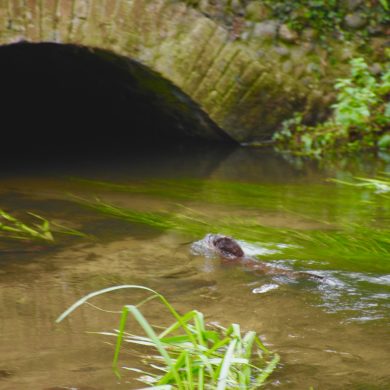Source: ASF / NASF
The lower dam (Barrage de la Roche Qui Boit) and upper dam (Barrage de Vezins) block not only Atlantic salmon but also eels that are also declining in numbers in Europe; the demolition has the potential for economic revitalization, as well.
Letter from Orri Vigfusson:
President of the Enquiry Commission
Attn. Mr. André NERON,
andreneron@wanadoo.fr
October 13th, 2014
Object: Public Enquiry / Sélune dams
As you know the dams blocking the River Sélune in Normandy have caused significant environmental damage, and in particular preventing runs of migratory fish. We understand that the public enquiry on the dismantling of these dams is being held on October 17th next.
The North Atlantic Salmon Fund (NASF) is an international coalition of voluntary private sector conservation groups who have come together to restore stocks of wild Atlantic salmon to their historic abundance. We are writing to you as a member of the Friends of the Sélune group, to confirm our commitment to this project. The removal of these dams is essential for the free upstream and downstream movement of migratory fish: no other technical solution is possible or reasonably fundable, and a final court decision of the Administrative Appeal Court of Nantes requires this dismantling. The governmental decision is fair and reasonable, and taken after careful consideration of all the resources and issues concerned.
Moreover, the removal of the dams is essential for sediment transport, which has been severely disrupted for a century (400,000 cubic meters of sediment has accumulated behind the upper dam and continues to increase each year). This transit is necessary for the good ecological functioning of the river that we must imperatively reach under our European commitments (Water Framework Directive). It is also imperative for improving water quality of the upper reservoir which is now in a deplorable state and threatens recreational activities (toxic cyanobacterial blooms: peril of death) and the production of drinking water downstream (Union “Bay Bocage”: 60,000 cubic meters drinking water per day).
Furthermore, the removal of the dams will make possible a social and economic revival of the valley by developing new eco-tourist activities, including a quality salmon angling experience, that will contribute to the conservation of the Atlantic salmon by establishing in the Bay of Mont St Michel and its tributaries one of the premier locations in France, and Europe, for this species (we expect 5,000 extra salmon in the river after the dams are removed).
This project is the only one likely to allow the River Sélune to achieve ‘good ecological status”‘required by the European Union and will greatly contribute to the conservation of the Atlantic salmon, a globally threatened species, and the European eel, also very threatened and for which the Sélune is a priority action area of the National Management Plan for this species. Without any effect on flooding, this exemplary and unique project in Europe, and in the world, will develop the local and national economies.
Our organization has followed the environmental development of the Sélune for the last two decades and we believe this is a very important step to in order to launch a full recovery of migratory fish stocks in mainland Europe’s rivers. I thank you in advance for your attention to these remarks.
Yours sincerely,
Orri Vigfússon
Chairman North Atlantic Salmon Fund

